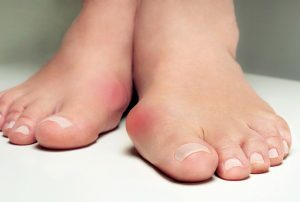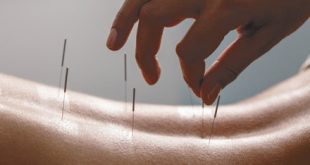Podiatric Treatments Work to Relieve Your Discomfort & Help You Enjoy Life Again
Michael J. Petrocelli, D.P.M., F.A.C.F.A.S., C.W.S.P.
Board Certified Ankle and Foot Surgeon and Board Certified Wound Care Specialist


What Can You Do?
Many women will try and work through the pain, but bunions are progressive and once they become inflamed, many people succumb to wearing more comfortable shoes, or using gel toe inserts that help keep the toes in the proper alignment. Icing the foot can help to tamp down inflammations, as well as taking NSAID’s (ibuprofen) as needed to lessen the discomfort.
When the conservative approach begins to stop working, which is NOT unusual as most bunions fail to heal on their own, surgery is the definitive answer.
Collier Podiatry Offers Advanced Surgical Options
In bunion surgery, the toe bone is cut in half, and part of the bone is removed. In many cases, there is a need to relieve tension on surrounding ligaments and tendons to try and realign the joint and bones. Generally, bunion surgery is done under an ankle block, which means that your foot will be completely numb, but you will not need to go under general anesthesia in most cases. Surgery can include removing boney spurs, removing part of the toe bone, relieving tension on ligaments and tendons, realigning and reconnecting the joint and bones. Depending on the complexity of your surgery depends on your need and level of anesthesia.
The total recovery can take a few months, but initially, you will be in a protective boot or cast for the first two to four weeks. You will be able to get around, but you must take precautions as to not injure your surgical site, and instead, allow the foot and toe time to heal properly.
BUNIONS ARE PAINFUL! It’s always best to be proactive and get them treated before they get too advanced.
A podiatrist will evaluate your symptoms and pain level, and from there create an individualized plan for your best treatment options. They will provide you with the best solution for your needs.
Collier Podiatry
Dr. Michael Petrocelli has been practicing podiatric medicine for well over 20 years. He is an expert in his field and a leader to his peers. If you are experiencing any foot pain or foot conditions, please contact Collier Podiatry. Their kind and well-trained staff are ready to answer your questions and concerns and get you back on your feet again.
Contact Collier Podiatry to make your
appointment. Please visit their website at www.collierpodiatry.com, or call them at (239) 775-0019
Collier Podiatry, P.A.
Michael J. Petrocelli
D.P.M., F.A.C.F.A.S., C.W.S.P.
NCH Countryside Commons
1715 Heritage Trail, Suite 204
Naples, FL 34112
Phone: (239) 775-0019
Fax: (239) 775-0219
 Southwest Florida's Health and Wellness Magazine Health and Wellness Articles
Southwest Florida's Health and Wellness Magazine Health and Wellness Articles

